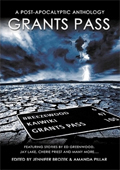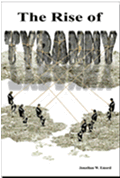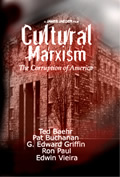SOROS-FUNDED
MARXISTS TO "OCCUPY THE RNC"
PART 1 of 2
By
Tina Trent, Ph.D - A special report from Accuracy in Media
August
22, 2012
NewsWithViews.com
Republican delegates arriving in Tampa for the convention this week will likely find one thing more oppressive than the humidity: hordes of motley Occupiers, political puppeteers, Teamsters, Code Pink activists dressed as giant female body parts, open-borders extremists, vegan Marxists, and tattooed anarchists, all assembling for their quadrennial temper tantrum.
One major target is the Republican presidential nominee, Mitt Romney, and anything ever associated with him. Plans include a tent city called “Romneyville” and protests against any companies assisted by Romney’s old firm, Bain Capital.
The purpose, in line with the campaign against the Republican Party being waged by the Obama presidential campaign and its Super PACs, is to depict Romney as a heartless capitalist, oblivious to the suffering of people who can’t make it in the modern economic system.
It is as yet unclear how many protesters will trek to Tampa and endure the heat. Nonetheless, in a ritual that grows more sophisticated with every new Occupy camp and political convention, protesters and their ACLU lawyers have been “in negotiation” with Tampa Mayor Bob Buckhorn and the city council for several months, demanding permits, demanding special restraints on the police, and threatening lawsuits if they don’t get their way.
The threat is not an empty one. After the 2004 Republican Convention in New York City, the ACLU published a 69-page report, Rights and Wrongs at the RNC, detailing the extensive legal campaign they waged to suppress the police’s ability to keep order during anti-RNC protests. The report was funded by George Soros, who is thanked in the endnotes. Soros is also a major donor supporting the ACLU’s many campaigns against law enforcement.
Rights and Wrongs at the RNC is now the leftist playbook for applying legal and financial pressure on cities before, during, and after protests. Municipalities that dare to host economic summits or try to rein in illegal Occupy encampments find themselves, and especially their police, virtually held hostage by the media strategies and legal actions detailed throughout the manual.
Ordinary citizens (and groups like the Tea Party) cannot stroll into city hall and demand special rules of engagement when dealing with the police. But this is precisely what is being done on behalf of Occupy protesters in city halls and university presidents’ offices across the country. Fear of legal backlash was one reason so many elected officials seemed paralyzed last autumn in the face of the Occupiers’ refusal to obey municipal laws.
The protesters who are about to hit Tampa’s streets, no matter how garish-looking or headline-grabbing, are mere pawns in this chess game. The lawsuits and forced “negotiations” being played out behind closed doors are where the real action is taking place.
And in this game, threats of violence are another crucial chess piece. The ACLU and protest leaders repeatedly insist that they have nothing to do with the violence that erupts in the vicinity of their “peaceful” marches. Yet in reality, violent protest serves their needs. The lawyers file police brutality charges if the police take any action to stop rioters, and they accuse the police of “failing to protect” the public and other protesters if the police don’t stop the riots quickly enough. No matter what police do, they are automatically accused of “silencing free speech.”
The media can’t get enough of the free speech angle, even if it doesn’t apply in any way to the reality on the ground, where rioters smash store windows and mob police vans.
The Anti-Police Narrative
Police in Oakland, New York City, St. Paul, Chicago and elsewhere have endured a sort of multi-pronged legal attack ever since the 1999 WTO riots devastated Seattle’s business district and set anti-globalization protesters on a new course. A dozen years later, after every new clash between protesters and police, police alone are subjected to drawn-out public inquiries and lawsuits. Even when they are found to have been behaving professionally, the police receive re-training, new limitations for engaging even the most violent protesters, and, sometimes, personal consequences.
In another case, the UC Davis pepper spray incident from November 2011, police were acquitted of charges of behaving inappropriately after an internal affairs committee found that the off-camera actions of the U.C. Davis protesters constituted a real threat. Yet, campus police officer John Pike, who used pepper-spray to disperse the protesters, was still dismissed from his job recently.
In spite of the ubiquity of the legal chess game, it remains largely unexamined. Less than a week before the convention, the Tampa media have not scrutinized the acceptance of violence as a strategy by the main activist groups coordinating the anti-RNC protests, and there has been sparse coverage of the violent protesters coming to Tampa. This November 2011 article on anarchist protesters, by Tampa Bay Times reporter Jessica Vander Velde, is an exception.
The litmus test for participating in the new protest movements is “respecting a diversity of actions,” sophisticated wordplay that means, specifically, that no protester should stop another protester from using violence or vandalism, nor should they report them to authorities if they know of such plans in advance. In practice, it means more than that: as journalist and onetime activist leader Mark Satin wisely observed back in 2000, while participating in protests at the Philadelphia RNC:
Ever since Seattle, protesters have been claiming that any violence ‘not caused by the police’ has been the result of bad apples or weird anarchists…”
When you watch what goes on at street level, though, you get a very different perspective on things.
True, probably fewer than 500 protesters in Philly were smashing windows, punching cops, overturning dumpsters, etc.
But the violent protesters were never stopped or even verbally discouraged by the thousands of other protesters. On the contrary—whenever violence was being wrought, the norm was for the “nicer” protesters to conduct support activities, such as chanting, cheering, and running amok so the police couldn’t easily give chase.
Besides, the theoretically neat distinction between “violence” and “nonviolence” becomes much less neat at street level. Is it not violent to spray-paint taxpayer-supported buses and buildings?
Is it not violent to shout endless insults at police officers—or to constantly harangue them about the “martyrdom” of a guy (Mumia) convicted of killing a police officer?
Is it not violent to keep working-class Philadelphians from being able to drive home at night because you and your friends have contempt for normal political channels?
There weren’t “good” and “bad” protesters in Philly. The protesters were an organic whole. They may have done different things on the street, but their separate acts were as connected as fingers on a hand.
And when you looked closely at that hand, it was really ugly.
The Plans for Tampa
Occupy the RNC, which is billed as the “above-ground coordinating committee” for protest marches against the Tampa RNC, affirms the “diversity of tactics” pledge as part of the “Tampa Principles” detailed on their website:
•
Our solidarity will be based on respect for a political diversity within
the struggle for social, economic and environmental justice. As individuals
and groups, we may choose to engage in different tactics and plans of
action but are committed to treating each other with respect.
• We reject all attempts to create divisions
among our movements. We agree to not publicly criticize other parts
of our movement or cooperate with state or media efforts to portray
good protester/bad protester.
• The actions and tactics used will be organized
to maintain appropriate separations of time and space between divergent
tactics. We will commit to respecting each others organizing space and
the tone and tactics they wish to utilize in that space.
This pledge is actually an endorsement of violence, not non-violence.
Yet, Occupy the RNC angrily asserts elsewhere on their website that
they are not endorsing violence. This is an obfuscation of both the
meaning and application of the “diversity of tactics” pledge.
It is also hardly believable, coming from an entity that goes to great
lengths to conceal its identity while angrily lashing out at police
and other targets.
Yet the main protest planners, including Food Not Bombs, Occupy the RNC, and other Occupy groups, all subscribe to “diversity of tactics.” Activist-journalist Natasha Lennard confirms that the adoption of the Tampa Principles allows for the possibility of violent protest in Tampa:
Groups in both Tampa and Charlotte have publicly stated that their plans for protest are peaceful, although a mixture of permitted and unpermitted actions are planned. The Coalitions to March in both convention cities have adopted their own versions of what were originally the “Saint Paul Principles,” used by RNC 2008 protesters. The principles include a respect for “diversity of tactics,” such that if a group chooses to adopt more radical or less law-abiding tactics than another protest contingent, they will not be obstructed. Above all, the principles stress that activists will not assist law enforcement action against other activists, regardless of a disagreement in tactics. Whether groups will break windows, burn dumpsters, damage property or even adopt Black Bloc anonymity tactics to move through the streets cannot be predicted and would never be publicly announced in advance.
Since the Black Bloc anarchists wreaked havoc in Seattle in 1999, anarchists, Occupiers, and other anti-corporate radicals have cost cities millions. Their real goal in Tampa is to drown out debate by making the election season as visceral as possible. Meanwhile, the professional activists behind the anonymous websites want only one thing: to capture the image of a Tampa policeman in riot gear lobbing tear gas at some youth in a t-shirt and broadcast it around the world.
Adbusters, the magazine credited with inspiring the Occupy movement, photo-shopped such an image even before the first Occupy tent unfolded. The Occupy the RNC website is lurid in its taunting predictions of martyrdom and bloodshed.
Tampa Politicians Play Ball with the ACLU
The question is this: why is Tampa falling for it? Why did the mayor and the Tampa City Council spend months submitting to drawn-out “negotiations” with the ACLU and protest groups without insisting on a public disavowal of “diversity of tactics” and violent protest itself, in order to prevent another Seattle ‘99, New York City 2000, Philadelphia 2004, St. Paul 2008, or Chicago 2012, where anti-NATO protests recently left several police officers injured?
Tampa officials are bending over backwards to accommodate the protesters. While access to the convention site is reasonably limited for security reasons, Mayor Bob Buckhorn outrageously chose to use $57,000 in taxpayer money to rent an empty lot for protesters to “occupy” 24/7 in sight of it. Leaflets are being distributed by the city and the ACLU advising protesters of their rights and offering them access to an official hotline. It seems Tampa officials are acting on the hope that, given enough free demonstration sites, free watering stations, and stroking from public officials, anarchists won’t maraud on city streets.
But none of this will placate protesters who have havoc as their goal. It doesn’t even placate the ACLU officials, who are feigning cooperation with Tampa police. Florida ACLU President Mike Pheneger complains that, by refusing to grant protest permits for sites in the heart of the convention district, Tampa is passing up an opportunity for “a nice, neat, tidy kind of exercise in first amendment rights.” This sort of statement, which willfully denies the real threat of violence, is a merely a warm-up to the lawsuits that will be filed by Pheneger’s group, regardless of the goodwill Tampa demonstrates to protesters.
Occupy the RNC states on their website: “Tampa passed an oppressive ordinance which strips rights, and makes virtually every participant an outlaw immediately by stepping foot onto downtown.” They accuse the “military industrial complex” of luring protesters into “a trap” in order to justify the convention’s security budget. In the New York Times, a spokesman for the group, Amos Myers, explains: “[w]e were born with the right to move freely from place to place and speak our minds.”
Only this week, the Tampa Bay Times interviewed Sam Rosenfeld, a security consultant who sees “worrying signs that the city of Tampa doesn’t understand the threat or how to manage it effectively.” According to the Times, such signs include “the small number of groups that have signed up for turns on the parade route and demonstrations in city parks.” The ornate overtures and negotiations engaged in by Tampa’s elected officials may be collapsing on the eve of the convention. If so, it’s time for the Mayor and the City Council to start talking more frankly, not to the protesters, but to the public.
Meanwhile, the federal government has allocated $100 million to pay for security at the Republican convention and the Democratic gathering in Charlotte. Even if only a handful of protesters show up at either event, they have already managed to hijack public resources through a highly coordinated campaign of complaints about “speech suppression” and threats of violence, all built on a record of violent street actions stretching back to the Seattle WTO riots of 1999. Will Tampa be the next victim of this high-stakes game?
| Subscribe to the NewsWithViews Daily News Alerts! |
Behind the street theater of Code Pink, Occupy, and the rest of the Occupy the RNC coalition, there exists a professional activist class subsidized by leftists such as hedge fund operator George Soros. Their involvement in the protest movement has also been rendered invisible by the media.
There is only a small window before the Tampa protests for the public to learn who is really leading this movement, and what are their true intentions. Here are the key players and some of their plans for Tampa. (A list of planned actions is continually being updated at Occupy the RNC.) For part two click below.
Click here for part -----> 1, 2,
� 2012 - Tina Trent - All Rights Reserved












 Share
This Article
Share
This Article





